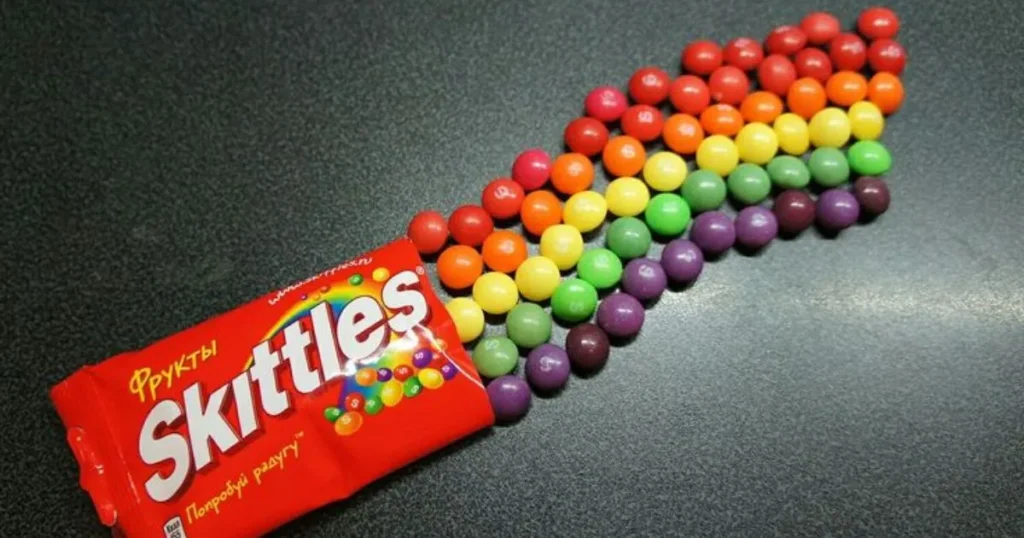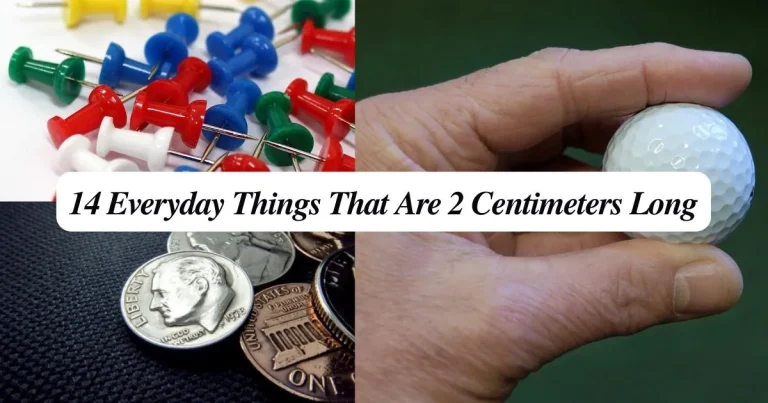Ever found yourself needing to measure something small but don’t have a ruler handy? You’re not alone. Many of us struggle to visualize measurements, especially when dealing with small distances like 2 centimeters.
This guide explores common objects that are about 2 centimeters long, making it easier for you to estimate sizes in your daily life. Whether you’re crafting, doing home repairs, or just need a quick measurement reference, these everyday items will help you gauge 2 centimeters with confidence.
How Big Is 2 cm?
Two centimeters equals exactly 20 millimeters or approximately 0.787 inches. While this might sound technical, it’s a measurement we encounter constantly in our daily lives. Think about the width of your thumb or a standard rubber eraser – these are close to 2 centimeters.
Understanding this size helps in countless situations, from cooking to crafting. It’s particularly useful when you need to make quick estimates without tools. The beauty of using everyday objects as references is that they’re always within reach.
How Long is 2 cm on Your Finger?
Your body provides one of the handiest measurement tools. On most adults, the width of the index finger at its tip measures very close to 2 centimeters. This natural ruler is always available when you need a quick size check.
The distance from your fingertip to the first knuckle line also typically measures about 2 centimeters. While finger sizes vary among individuals, this approximation works surprisingly well for quick estimates in everyday situations.
1. AAA Batteries

AAA batteries serve as perfect measurement tools due to their standardized size. With a diameter of exactly 10.5 millimeters (just over 1 cm), placing two side by side gives you a precise 2-centimeter reference.
These power sources are everywhere in our homes, from remote controls to small flashlights. Their consistent manufacturing standards across brands like Duracell, Energizer, and Panasonic means you can rely on their dimensions for quick measurements.
2. Paper Clip (Standard Size)

The standard office paper clip measures almost exactly 2 centimeters across its shorter side. These ubiquitous office supplies follow strict manufacturing standards to ensure consistent performance and stackability.
Most major paper clip manufacturers, including industry leaders, maintain this precise dimension to ensure compatibility across different brands and uses. This standardization makes paper clips surprisingly reliable measurement tools found in nearly every office drawer.
3. Guitar Pick (Medium Size)

A medium-sized guitar pick typically measures 2 centimeters at its widest point. This standardized size has evolved through decades of musical instrument development to provide optimal control and sound quality for guitarists.
Major manufacturers like Dunlop, Fender, and Gibson maintain consistent sizing for their medium picks, making them excellent reference tools. The durable plastic material ensures the measurements stay consistent even with regular use, unlike some softer reference objects.
4. A Large Peanut

A typical large peanut measures right around 2 centimeters in length. This natural measurement tool grows consistently due to agricultural standards, making it a surprisingly reliable size reference.
Whether you’re snacking or cooking, peanuts maintain this size consistently. Their uniform growth patterns, regulated by farming practices, ensure most large peanuts fall within the 1.8 to 2.2-centimeter range.
5. Aspirin Tablets

Standard aspirin tablets measure approximately 14 millimeters (1.4 cm) in diameter. Stack two tablets, and you’ll get slightly over 2 centimeters. This standardized size makes aspirin tablets a reliable reference point.
Pharmaceutical companies maintain strict size specifications for these tablets, ensuring consistent measurements across different brands. This uniformity makes them particularly useful as a size reference, especially when precision matters.
6. An SD Card

Standard SD cards follow precise specifications, measuring 24mm x 32mm. While slightly longer than 2 centimeters, the width comes close enough to serve as a useful reference point.
These digital storage devices maintain consistent dimensions across all manufacturers, thanks to industry standards. Their ubiquity in modern electronics makes them readily available for quick size comparisons.
7. A Small Safety Pin

Standard small safety pins measure precisely 2 centimeters in length, making them perfect measuring references. These common household items maintain consistent sizing across manufacturers due to their practical applications in sewing and crafts.
Their reliable dimensions come from decades of standardized manufacturing processes. Whether you’re using them for temporary fabric holds or quick fixes, these pins provide a trustworthy 2-centimeter guide.
8. Skittles

Each Skittle candy measures approximately 1.27 centimeters in diameter. Place two Skittles side by side, and you’ll have a length very close to 2 centimeters.
Mars company maintains strict quality control over Skittles’ size, ensuring consistent dimensions across all production batches. This standardization makes them surprisingly reliable for casual measurement references.
9. Sewing Needle

A typical medium-sized sewing needle measures about 2 centimeters from eye to point. This length provides optimal control for hand sewing while maintaining enough strength for various fabric types.
Needle manufacturers follow specific sizing standards, making them reliable measurement references. Their precise sizing system helps crafters choose the right tool for different projects.
10. 100-Page Notepad

A standard 100-page notepad of regular paper typically measures about 2 centimeters in thickness. This measurement assumes standard 80 GSM paper, commonly used in office supplies.
Paper thickness varies slightly by brand and quality, but most notepads maintain similar dimensions due to manufacturing standards. This makes them convenient desktop measuring tools.
11. A Nickel (U.S. Coin)

The U.S. nickel measures precisely 21.21 millimeters in diameter according to U.S. Mint specifications. This makes it slightly larger than 2 centimeters, providing an excellent reference point for estimating measurements.
Unlike other everyday items that might vary in size, coins maintain exact dimensions due to strict manufacturing standards. The nickel’s durability and widespread availability make it one of the most reliable measurement references.
12. Golf Ball

Professional golf balls must meet strict size requirements set by the USGA. Their diameter measures exactly 42.67 millimeters, making a golf ball’s radius approximately 2 centimeters.
This standardization ensures fair play across all levels of the sport. The consistent size makes golf balls excellent reference tools for estimating 2-centimeter measurements.
13. A Thumbtack

Standard thumbtacks feature heads measuring around 2 centimeters in diameter. Office supply manufacturers maintain this size to ensure optimal grip and functionality.
The consistency in thumbtack dimensions stems from decades of design refinement. Whether you’re using them for cork boards or craft projects, their size remains remarkably uniform.
14. A Drill Bit

In standard drill bit sets, the 2-centimeter length marks a common size for precision work. These bits, typically used for detailed woodworking or metal projects, offer exact measurements due to industrial manufacturing standards.
Professional-grade drill bits maintain precise dimensions to ensure accurate results. Their consistent sizing makes them reliable measuring tools, even when not being used for drilling.
Practical Applications of 2cm Measurements
Understanding 2-centimeter measurements helps in numerous daily tasks. From cooking measurements to DIY projects, this size knowledge proves invaluable for quick estimates without tools.
Many craft patterns and assembly instructions reference 2-centimeter specifications. Having these everyday reference objects handy helps ensure accuracy in your projects without constantly reaching for a ruler.
Tips for Accurate Estimation
Combining multiple reference objects helps verify your estimates. For instance, checking both a nickel and your fingertip provides more accurate measurements than using just one reference point.
Remember that some objects may wear down or vary slightly. Hard objects like coins and batteries tend to provide more reliable measurements than softer items like erasers or food items.
Common Misconceptions About 2cm
Many people confuse 2 centimeters with similar measurements like inches. While 2 centimeters equals about 0.787 inches, this small difference can significantly impact precision work.
Temperature and humidity can affect some measuring references, particularly paper products and natural items. Using multiple reference points helps maintain accuracy despite environmental factors.
Digital Age Measurements
Modern smartphones often include measuring apps utilizing their cameras. However, understanding physical references remains valuable when technology isn’t available or practical.
The rise of 3D printing has made precise measurements more important than ever. Many common 3D printing projects require accurate 2-centimeter measurements for proper scaling and assembly.
Read Also: 12 Common Things that are 5 Centimeters long
Conclusion
These everyday 2-centimeter references provide convenient measuring tools when traditional rulers aren’t handy. From coins to common household items, you’re likely surrounded by reliable measuring references.
Remember that while these objects offer good approximations, use proper measuring tools for tasks requiring precise measurements. Keep these references in mind for quick estimates, but rely on calibrated tools for critical measurements.
The ability to estimate 2 centimeters accurately helps in countless daily situations. Whether you’re hanging pictures, measuring ingredients, or working on craft projects, these common objects serve as reliable guides for quick measurements.
Additional Resources
For more precise measurements, consider keeping a small pocket ruler handy. Digital calipers provide even more accurate measurements when precision is crucial.
Many online resources offer printable measurement guides. However, verify your printer’s scaling settings to ensure accurate reproduction of measurements.
Remember that professional tasks often require certified measuring tools. While these everyday references work well for casual estimates, use appropriate tools for professional or technical work requiring exact measurements.
